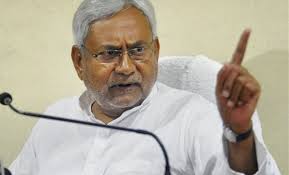New Delhi, Jun 13: Veteran Urdu poet Anand Mohan Zutshi 'Gulzar' Dehlvi passed away on Friday afternoon, five days after he recovered from COVID-19.
He died at his Noida home, and was a month shy of turning 94.
"His corona test came negative on June 7 and we brought him home. Today he had lunch and at around 2.30pm he passed away," his son Anoop Zutshi told PTI.
"He was quite old, and the infection had left him very weak. So doctors are thinking it was possible a cardiac arrest," he added.
A freedom fighter and a premier 'inquilabi' poet, Dehlvi was admitted to a private hospital on June 1 after testing positive for coronavirus.
Born in old Delhi's Gali Kashmeerian in 1926, he was also the editor of 'Science ki Duniya', the first Urdu science magazine published by the Government of India in 1975.
Remembering her fond memories of Dehlvi, historian-writer Rana Safvi recalled seeing the poet at most 'mushairas' in Delhi.
"I cannot express how big a loss it is. We used to see him at every 'mushaira' in Delhi. It's a big loss to Delhi and the world of poetry," Safvi said.
She also took to Twitter to express her condolences.
"Sad to hear about Gulzar Dehlvi saheb's demise. He was the quintessential Dilli waala. May he rest in peace," she tweeted.
According to Delhi-based poet and lawyer Saif Mahmood, Dehlvi was "the presiding bard of Delhi", following in the footsteps of iconic poets like Mirza Ghalib, and Mir Taqi Mir.
His death is the "end of an era", he said.
"No one knew the nooks and crannies of Mir and Ghalib's Delhi like him. Gulzar saheb claimed that his father, Allama Pandit Tribhuvan Nath Zutshi 'Zaar Dehlvi', was a disciple of the renowned poet Daagh Dehlvi," he said, while reminiscing his meeting with Dehlvi three years back.
The poet had recited a still unpublished 'sher' (couplet) then, Mahmood said, which seems more relevant now in the aftermath of his demise.
"Mere baad aane waalon, meri baat yaad rakhna/ mere naqsh-e-pa se behtar, koi raasta nahin hai". (Those who come after, remember what I say/ there’s no better way than to follow my footprints).
"He was a true exemplar of not just the Urdu language but also of the Urdu culture. In fact he was a living and breathing form of Urdu tehzeeb," Mahmood said.






Comments
Add new comment